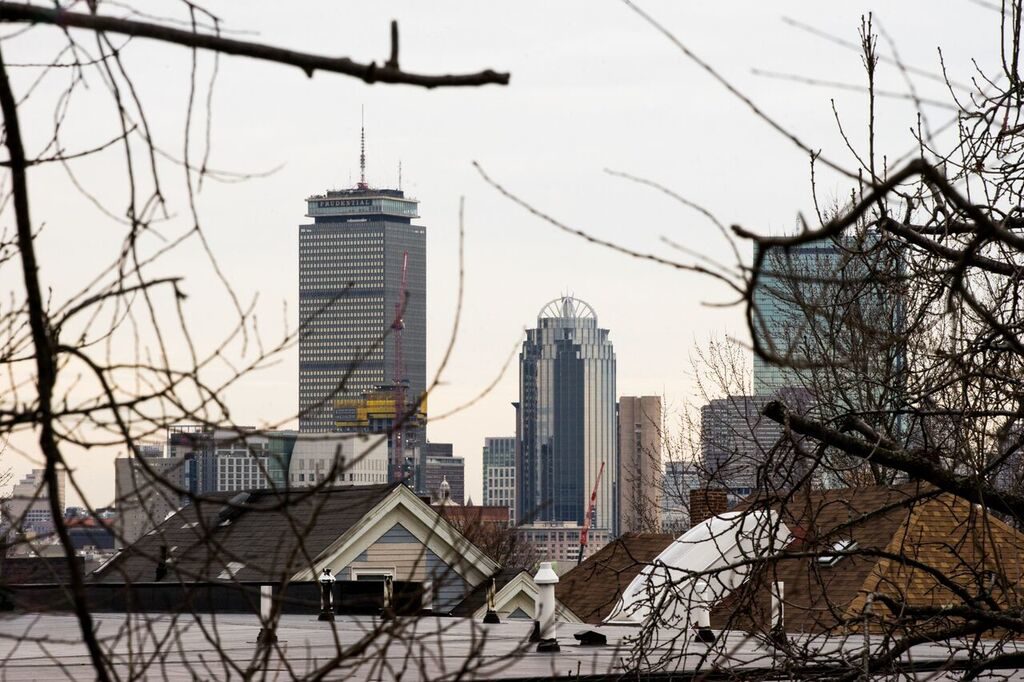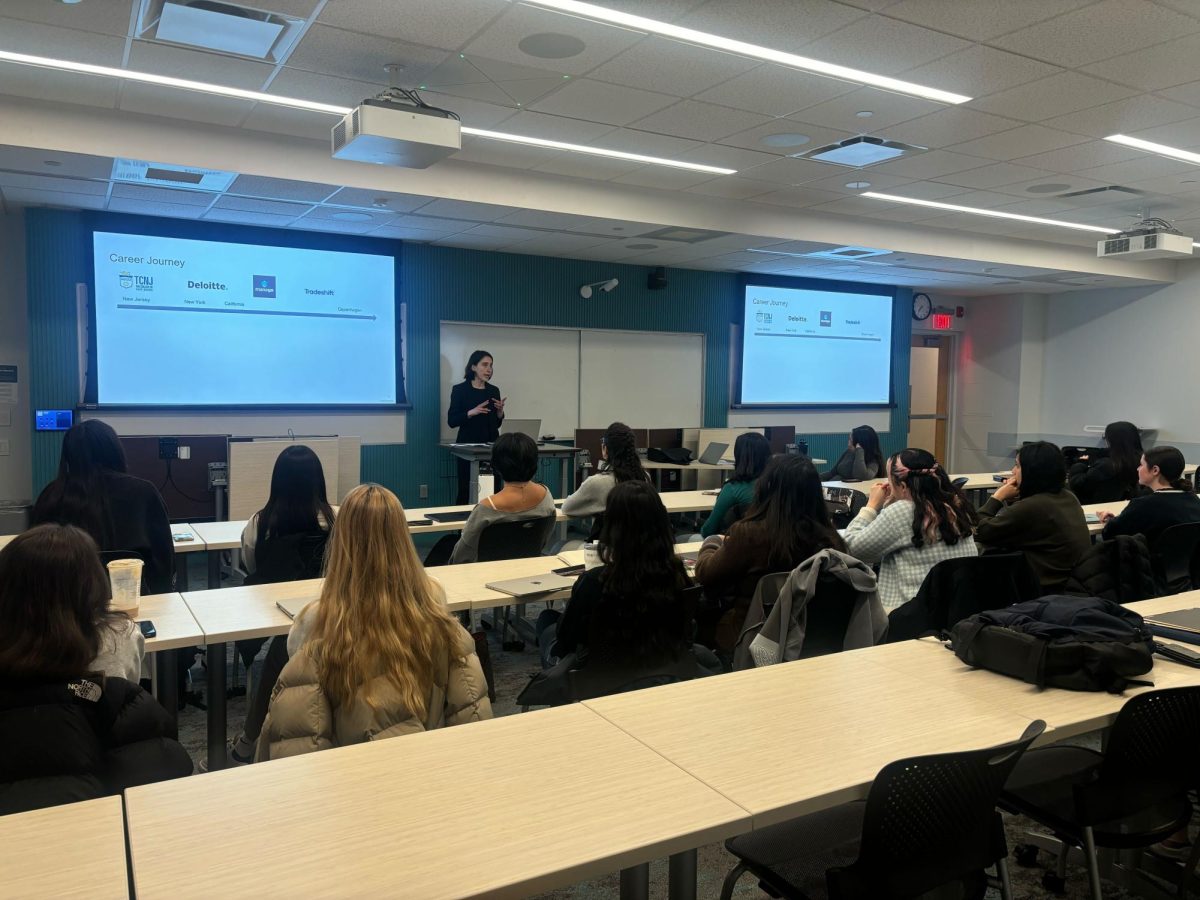By Isabelle Hahn, news correspondent
An academic oasis surrounded by Boston’s bustling city life, Northeastern University’s campus gives students the atmosphere of academia and a taste of city tempo. On a perfect fall day, the community comes to life with Frisbee games and study groups on Centennial Common.
That’s exactly what Elena Sandell, a second-year English student, pictured when she decided to transfer to Northeastern from the more secluded and suburban Belmont University in Nashville, Tennessee. It was only after Sandell put down her deposit for enrollment that Northeastern told her she would not receive on-campus housing and would have to search elsewhere on her own.
“I just wanted the campus experience,” Sandell said. “If I was told I wouldn’t get housing when I applied, I would have had to reevaluate my decision.”
Now, Sandell lives a 30-minute walk from campus. Stepping into the two-bedroom apartment on Mission Hill, it’s obvious the pristine granite countertops and unused appliances do not feel like home to the 19-year-old; they feel industrial and temporary. Sandell is isolated and wants to get out.
There are very limited programs to help transfer students acclimate to Northeastern, a lack of housing being the most egregious problem. Housing for new students is an integral part of the university experience and a vital aspect of establishing a community in a new place.
“On-campus living allows students to make and maintain friendships,” said fourth-year Residential Assistant Camille Vasquez, who creates programs at International Village to make her residents feel more at home. Vasquez also said she met many of her closest friends in her residence hall during her first year.
As soon as Sandell was accepted last April, she signed up for the on-campus housing waitlist and anxiously anticipated a response. For her and the majority of 2017 transfer students, a response never came.
In the last year, the language for transfer student on-campus housing has shifted from “not guaranteed” to “not guaranteed or required.” This vague policy not only allows the university to shy away from housing students, but also to be unresponsive and unclear about the lack of rooms available.
In 2009, there were 2,833 first-time freshmen enrolled full-time at Northeastern, out of a total undergraduate population of 15,699. An admissions pamphlet containing only 18 words about transfer students states there are 18,107 full-time undergraduates enrolled.
Northeastern’s acceptance rate remains at around 27 percent, but as the school rises in ranking, more students are enrolling. The 2017 freshman class was the largest admitted in Northeastern’s history at around 3,100 students, according to admissions.
Between this and Northeastern’s more than 830 annual transfer students, the school lacks enough on-campus housing resources.
In Sandell’s four months at Northeastern, she has moved twice. Her first living arrangement ended in disaster after she settled for a random roommate who ended up involved in a police investigation.
She’s still desperate to get closer to campus. Not only does the commute waste time in her schedule, the distance hinders her social life, so Sandell is packing up for the third time and moving to Symphony Street.
PLAYING CATCH-UP
In the fall of 2014, Northeastern had 8,414 beds for its 17,400 undergraduates. If half the undergraduate students wanted to live on campus, there would have been 286 students without anywhere to sleep.
Northeastern’s housing policy states first- and second-years are required to live on campus, unless students can prove living off-campus would be more beneficial. Housing is also guaranteed to all non-transfer undergraduates at Northeastern, according to admissions.
According to the Northeastern housing website, first- and second-year students who live in residence halls build closer relationships with faculty, staff and their peers; become more involved; and are generally more satisfied with their university experience.
With current accommodations for approximately 9,100 students — barely enough to cover the freshman and sophomore student population, let alone guarantee housing for all years of study — the university is stuck playing catch-up with enrollment.
In 2007, Northeastern’s website claimed the university was capable of housing more than 300 transfer students, when 772 transfers had enrolled the previous year. Last fall, 1,164 transfers enrolled, and the website did not boast room for any of them. According to third-year transfer student Nabeel Sherazi, only a handful of those students received housing.
Over the last two semesters in the admitted transfer students Facebook group he moderates, Sherazi has seen an increase of concerned posts from students about not being able to find housing — most of them reaching out for information on where they should look for apartments.
“We had a student in spring 2017 who showed us their acceptance letter which said, ‘transfer students are not guaranteed housing,’ and I remember mine saying we would have housing,” said Sherazi, who was accepted in 2016. “That’s the most terrifying thing for students, trying to learn how to navigate Boston housing.”
OFF-CAMPUS STUDENT SERVICES
Mallory Pernaa sits behind a shared desk in the small Off Campus Student Services office on the second floor of the Curry Student Center. As assistant director, most of her time is dedicated to reviewing leases, running the off-campus online database and talking to parents and students about housing policy.
She recalled a phone conversation in which she had to tell a parent that their transfer student would not receive on-campus housing, and if that was a deal breaker, they would have to attend elsewhere.
“There has been a huge housing crunch this past year, and it’s been a guessing game for rooms,” Pernaa said. Even with 50 percent of the student population currently living off campus, Pernaa said, there are still not enough rooms.
The only residence hall being built within the next two years will be on Burke Street and will house some 800 students. But students will lease units from a private developer and the rooms will not be part of the housing lottery system.
Northeastern has increasingly relied on leased properties to solve its housing crisis, especially this past April. Many second-year students who were supposedly required to stay on campus did not have a place to live and were told to wait until upperclassmen dropped their housing assignments. When not enough students did, Housing Services turned to leased properties, some as far away as Allston.
ISOLATION
After attending the University of Nottingham for one year, Shanghai native Rini Chen, a second-year economics and mathematics combined major, decided she wanted to transfer to a university in the United States. She chose to move from the United Kingdom to Boston in fall 2017.
She had never visited campus before she got her acceptance, and had to go through a real-estate agent, viewing apartments via FaceTime from China.
Chen now lives in a Westland Avenue apartment and is thankful that her parents are able to afford off-campus accommodations. She was told upon admission that housing was not available to her.
“On the [acceptance letter] it said there was no room,” Chen said. “I think if I lived on campus, I would meet more people. I hardly have any new friends here. It feels very isolating.”
Because Chen came to Northeastern immediately knowing that she had to find other options, she was able to avoid the stress of unknown room placement. However, like many transfer students, Chen is unhappy with her living situation and feels like an outsider.
MORE STUDENTS, MORE NEED FOR HOUSING
Northeastern admissions are projecting more than 60,000 applicants for fall 2018. The closest estimate for those who applied last year was 55,400.
Northeastern developed its housing policy specifically to attract students, but Pernaa said that policy hasn’t always worked out in the university’s favor.
“It is always Northeastern’s goal to house the students that want to live on campus,” Pernaa said. “However, the demand is just too high.”
The housing crunch has only continued to grow through rising levels of enrollment. As admissions prepares for more than 60,000 applicants, the housing office should prepare to lease more properties.
Some students, including Chen, believe they will not live on campus at any point during their studies.
At this point, the housing policy remains the same for transfer students: They have access to on-campus housing on a space-available basis. But as enrollment increases, the possibility for transfer students to receive housing at Northeastern is slim to none unless Northeastern invests in more properties.
THE NORTHEASTERN DREAM
After meeting Northeastern students who were on a Dialogue of Civilizations at the London School of Economics and Political Science, Claire Boggs, a student at the University of Denver, fell in love with Northeastern. When she returned home, she filled out her transfer application.
During transfer orientation, Boggs realized how limited Northeastern’s housing resources were and how low her chances would be to receive on-campus housing.
“The big turning point was that I didn’t have anywhere to live,” Boggs said. “I didn’t know Boston well enough to make an informed decision on where to live by myself..”
Not only does Northeastern’s housing problem alienate attending students, it prevents students who want to attend from accepting enrollment. On top of that, financial aid does not cover off-campus housing expenses, making Northeastern too far out of reach for students who can’t afford the expensive Boston housing market out of pocket.
After transfer orientation, Boggs returned to the University of Denver, where she will graduate in 2019. As a third-year, it is now too late for her to consider reapplying in the future.
“At the end of the day, if you are coming from out of state, providing real estate agents doesn’t do much,” Boggs said. “I think the university thinks that they do more than they actually do for students.”









